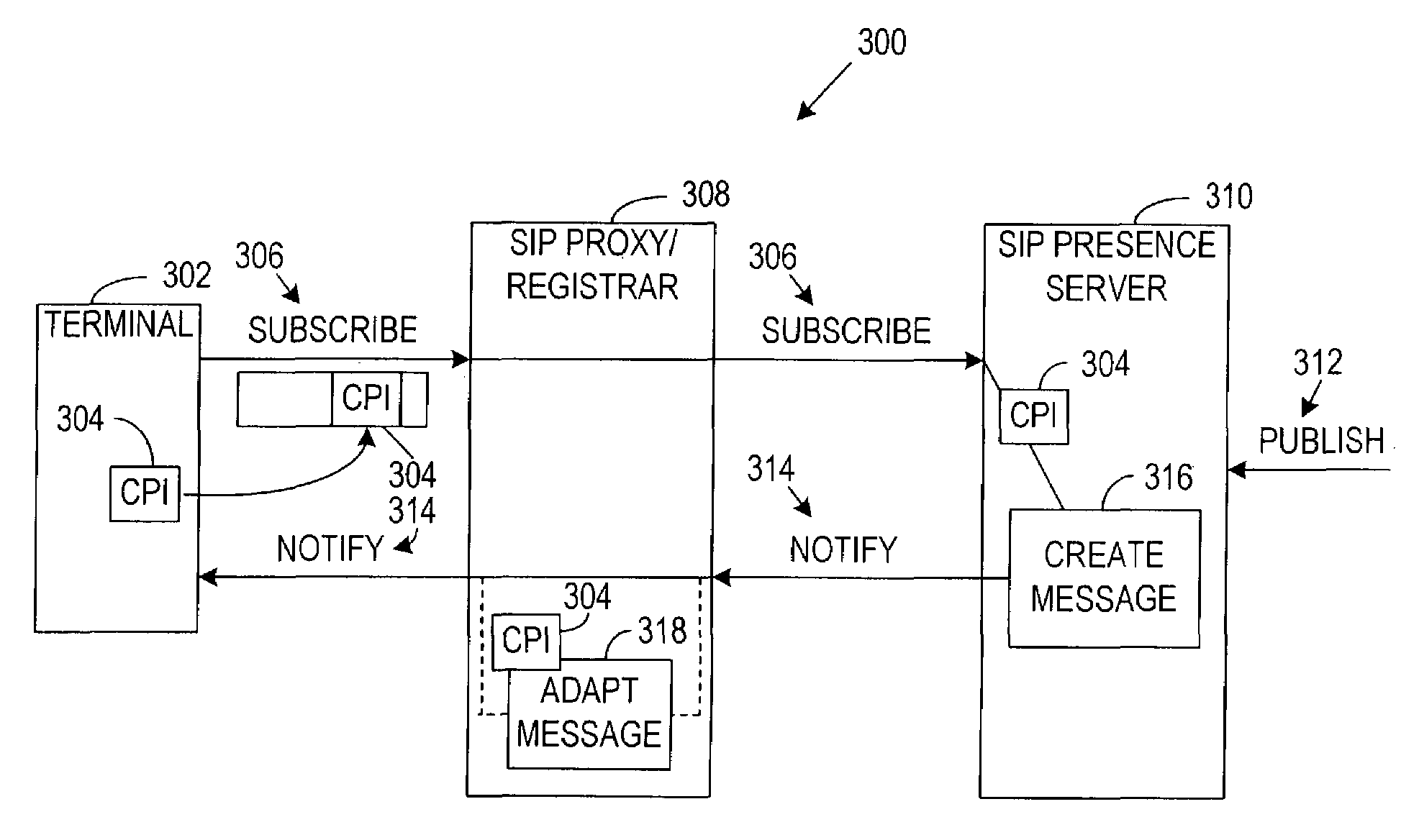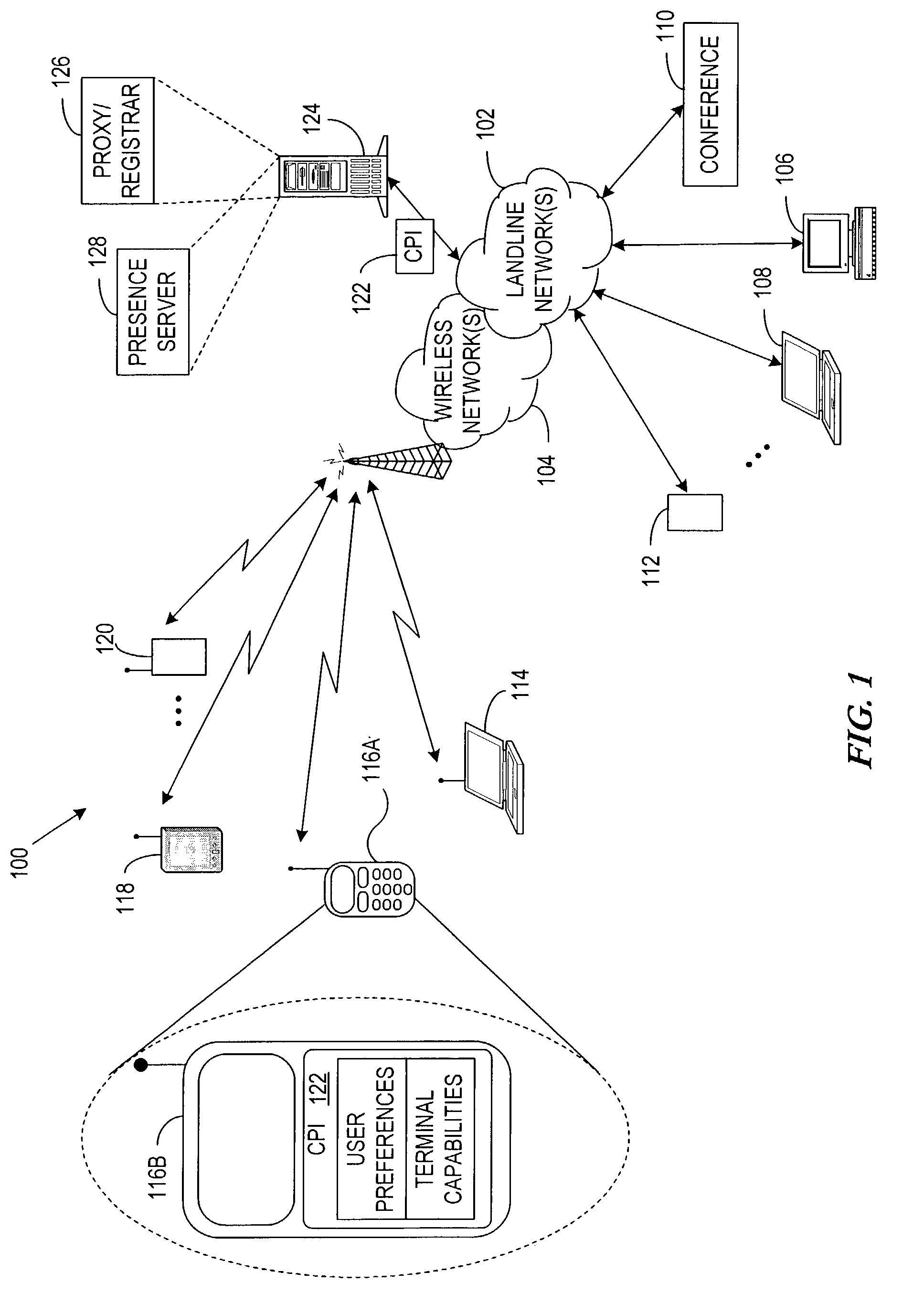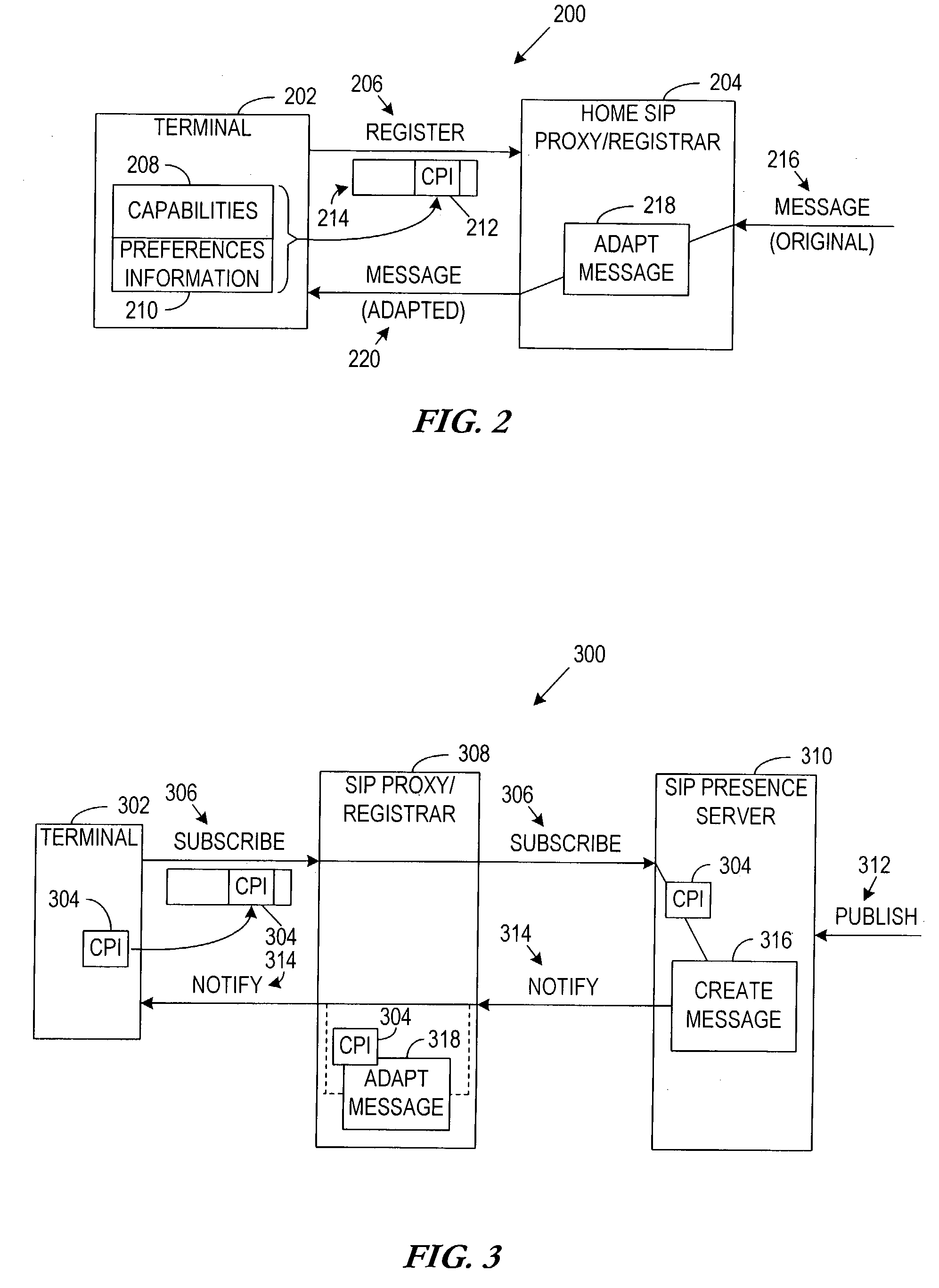System and method for conveying terminal capability and user preferences-dependent content characteristics for content adaptation
a terminal capability and content technology, applied in the field of communication, can solve problems such as difficulty in achieving the effect of achieving the effect of satisfying the needs of the particular terminal, affecting the adaptability of the content, and imposing limitations on the network
- Summary
- Abstract
- Description
- Claims
- Application Information
AI Technical Summary
Benefits of technology
Problems solved by technology
Method used
Image
Examples
example 1
[0073]This specifies that the maximum message body size cannot exceed 32768 bytes. In prior art systems, such a maximum message body length parameter is not supported. This maximum body size includes, for example, the total size of all the body parts of the message without headers. Thus, a terminal may reserve some memory for the headers since their length may not be precisely known as it may depend on the message transmission (e.g., adding route in SIP).
[0074]The terminal message body size limit set forth in Example 1 involves the registration of two media feature tags: 1) encoding; and 2) length. The “encoding” media feature tag corresponds to the Accept-Encoding header of SIP messages. Thus, this information can be mapped to SIP parameters as described in G. Klyne, “A Syntax For Describing Media Feature Sets,” RFC 2533, Internet Engineering Task Force, March 1999.
[0075]Some MIME “types” may also be limited in size in accordance with the present invention. For example, a length pa...
example 2
[0077]This specifies that JPEG images cannot exceed 32768 bytes. It is noted that the “type” media feature tag is already a registered feature tag, and the new “length” feature tag extends the applicability of the “type” media feature tag to identify a maximum length of the particular media type (i.e., a JPEG image in this example).
[0078]The field “q=0.8” represents a quality value which are used to rank feature sets according to preference. For example, a quality value of “q=0.8” is preferred over a quality value of “q=0.5.” The use of such quality values are particular beneficial where multiple feature tags are used, and relative preference priorities are desired among the multiple feature tags.
[0079]In accordance with the present invention, additional media feature tags are provided that relate to the resolutions supported by the terminal for visual media. Two such media feature tags include the “media-pix-x” and “media-pix-y” tags, which provide information about the maximum or ...
example 3
[0081]These tags specify that the terminal can support JPEG images no larger than 640×480, and GIF images no larger than 160×120. It is noted that the “media-pix-x” and media-pix-y” feature tags in accordance with the present invention complement existing registered media tags by presenting the maximum resolution handled for different media types.
[0082]Example 4 provides an example where the feature tag applies to an entire media category:[0083](&type=“image / *”) (media-pix-x
PUM
 Login to View More
Login to View More Abstract
Description
Claims
Application Information
 Login to View More
Login to View More - R&D
- Intellectual Property
- Life Sciences
- Materials
- Tech Scout
- Unparalleled Data Quality
- Higher Quality Content
- 60% Fewer Hallucinations
Browse by: Latest US Patents, China's latest patents, Technical Efficacy Thesaurus, Application Domain, Technology Topic, Popular Technical Reports.
© 2025 PatSnap. All rights reserved.Legal|Privacy policy|Modern Slavery Act Transparency Statement|Sitemap|About US| Contact US: help@patsnap.com



